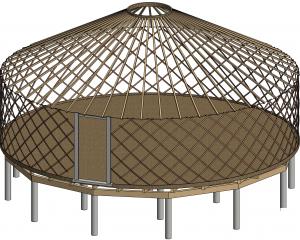An Australian scientist has provided more insight into the last moments of Nasa's super pressure balloon, launched in Wanaka on March 27 and brought down on a cattle station in a remote part of west Queensland on April 28.
Writing on The Conversation website, associate professor in astrophysics at the University of New South Wales Ravi Sood said the 2.268-tonne balloon was carrying a payload of 1.588 tonnes in the harsh environment of the stratosphere.
''The tensions in the balloon envelope resulting from the enormous weight that it is carrying can result in deformations and leaks, which is what happened to the latest Nasa balloon.''
Assoc Prof Sood said the balloon's early performance had been excellent as it drifted as expected over South America and then South Africa.
''But the stratospheric winds over the Indian Ocean developed an unexpected north-south component which eventually led it to drift towards Queensland.''
Assoc Prof Sood said stratospheric winds blow strongly in an easterly direction for six months of the year then switch around and blow strongly in a westerly direction.
''The launch of the Nasa super-pressure balloon coincided with the April switch in wind direction.''
That caused it to drift towards Queensland.
''When this happens on a balloon flight in Australia's airspace, we at UNSW Canberra are required by Airservices Australia to carry out the flight termination so that there is no danger to aircraft during the flight descent.
''We also have to avoid restricted and inhabited areas for landing, which is what we did with the latest flight.''
Assoc Prof Sood said on the morning of April 28, he was informed by Nasa the balloon had developed a leak.
''Since the projected path would have taken it towards Adelaide, it was decided to terminate the flight while it was over sparsely populated areas.''
Assoc Prof Sood said the flight was terminated at 1.03pm and the payload with parachute hit the ground at 1.44pm, 107km northeast of Tibooburra.
The balloon descended separately and landed 10km from the payload.
While the mission ended in ''misadventure'', Prof Sood considered super-pressure balloons had advantages over conventional satellites.
Assoc Prof Sood has been director of the balloon launching station at Alice Springs since 1988.











